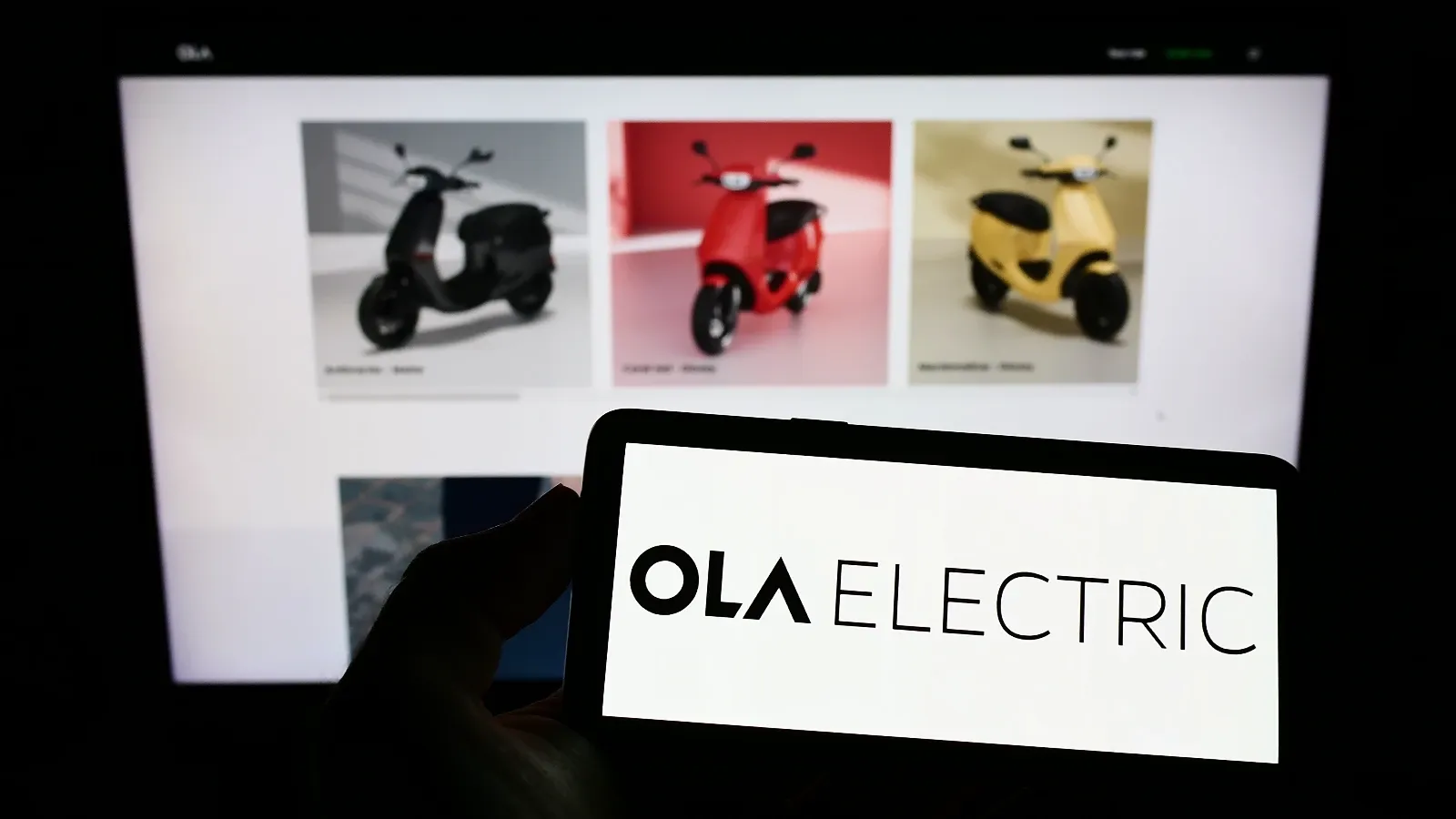Market News
Ola Electric shares surge 31% in five sessions; here is why the stock is soaring

4 min read | Updated on September 01, 2025, 16:13 IST
SUMMARY
On Monday, Bhavish Agarwal-led firm’s shares closed at ₹62.97 apiece on the National Stock Exchange, climbing 16.50%. The stock has jumped over 59% from its 52-week low of ₹39.60, touched on July 14, 2025
Stock list

Ola Electric last week had secured Production Linked Incentive (PLI) certification for its Gen 3 scooter portfolio.
On Monday, Bhavish Agarwal-led firm’s shares surged over 18% to hit an intraday high of ₹63.79 apiece on the National Stock Exchange. Ola Electric shares closed at ₹62.97 apiece, climbing 16.50%.
The stock has jumped over 59% from its 52-week low of ₹39.60, touched on July 14, 2025.
Here are some key developments driving the rally in Ola Electric shares:
Ola Electric last week had secured Production Linked Incentive (PLI) certification for its Gen 3 scooter portfolio, a move expected to boost profitability from the second quarter of fiscal 2026.
The certification, granted by the Automotive Research Association of India (ARAI) under the Ministry of Heavy Industries, covers all seven models in Ola’s Gen 3 scooter lineup, including its flagship S1 Pro and S1 X variants.
With both its Gen 2 and Gen 3 portfolios now PLI-compliant, the company is eligible for incentives ranging from 13% to 18% of determined sales value until 2028.
Last month, Bhavish Aggarwal had shared plans for new launches, including products with the 4,680 Bharat cell, which offers 15 years of battery life, five times more capacity, and 80% charging in 15 minutes, to be available by Navratri from its Tamil Nadu plant. Ola is targeting 25-30% of India’s two-wheeler EV market with vertical integration, new scooters, motorcycles, and ferrite motor technology to cut the use of rare earth magnets.
Aggarwal had also stressed the need to expand raw material sourcing from China to Japan, Korea, and Australia. Ola’s motorbike has received strong demand and is being expanded gradually, while the company recently launched the Ola Pro Sport scooter with the Bharat cell and ferrite motor tech.
The meeting is expected to see participation from major two-wheeler manufacturers, including Hero MotoCorp, Bajaj Auto, TVS Motor, Ola Electric, Ather Energy, and Revolt Motors. According to reports, the primary focus will be on accelerating the electrification of motorcycles, a segment that dominates India’s two-wheeler market but has so far seen negligible adoption of electric models.
Ola Electric Mobility posted a consolidated net loss of ₹428 crore for the April-June quarter of the financial year 2025-26. The firm had reported a net loss of ₹347 crore in the same period last year. Ola’s revenue from operations stood at ₹828 crore in Q1 FY26, declining 50% from ₹1,644 crore in Q1 FY25.
The company’s EBITDA loss for the reporting quarter stood at ₹237 crore in contrast to ₹205 crore year-on-year (YoY). Ola said that its auto segment cash generation was within reach: “Q1FY26 nearly neutral, structural improvements in opex and working capital.”
The company expects that by the end of FY26, it will have fully utilised the 1.4 GWh and installed the remaining capacity to get to 5 GWh and scale consumption to 5 GWh through FY27.
The EV maker has also successfully developed Heavy Rare Earths (HRE)-free motors, which are scheduled for production deployment in Q3 FY26.
Its Q1 auto GM of 25.6% was largely without PLI, and from Q2 onwards we should get the PLI benefit too, leading our exit GM for FY26 to be around 35-40%.
About The Author
Next Story

